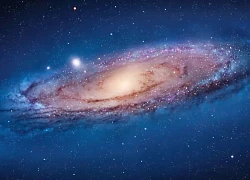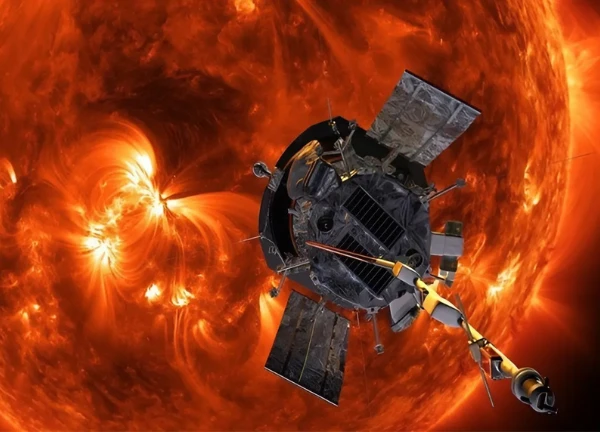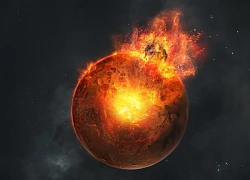Tiktoker Ha Moi rumored to have broken up with her overseas Vietnamese boyfriend, related to Negav?

4 | 0 Discuss | Share
Recently, astronomers have discovered 55 stars "fleeing" from the R136 cluster at supersonic speeds, 80 times the speed of sound on Earth. This strange phenomenon raises many questions about an imminent cosmic upheaval.
Cluster R136, where these stars originated, is located about 158,000 light-years from Earth. It is a giant star-forming region in the Tarantula Nebula, part of the Great Magellanic Cloud, which contains hundreds of thousands of stars, including the most massive ever discovered.
Some of the stars here are 300 times the mass of the Sun, emitting millions of times more powerful energy than our own. However, not all of the stars in this cluster have retained their positions.
The scientists found that a significant number of stars were ejected from R136 in two separate waves that took place over the past 2 million years. Some of them travel at speeds of more than 100,000 km/h, which is 80 times faster than the speed of sound on Earth. These stars are so massive that they can eventually end their life cycles with supernova explosions, leaving behind black holes or neutron stars.
The team led by Mitchell Stump, a scientist at the University of Amsterdam, used data from the Gaia telescope to track the movements of these stars. Gaia is an important project by ESA to create the most detailed 3D map of the Milky Way and neighboring galaxies.
Thanks to its ability to accurately track the position and velocity of billions of stars, the telescope has helped scientists detect the unusual movement of stars in R136, and at the same time increased the number of "fugitive stars" known to humans by 10 times.
The main reason these stars were "banished" from R136 had to do with the strong gravitational pull between them. When stars form in a dense environment, they can gravitatively interact with each other, making their orbits chaotic.
In some cases, this interaction can push some stars out of the cluster, making them "fugitive stars" wandering in intergalactic space. It is worth noting that this phenomenon has not only occurred once at R136, but two major events have occurred in the past 2 million years.
The first event took place 1.8 million years ago, when a new star cluster formed. During this phase, the stars are ejected in various directions and at high speeds. The second event took place about 200,000 years ago, but this time, the stars did not scatter randomly, but moved in a specific direction at a slower speed.
Scientists believe that the second event may be related to the interaction between R136 and another nearby star cluster. The cluster was only discovered in 2012 and it is likely that the two will merge in the future.
Over the past few million years, these events may have caused R136 to lose up to a third of its massive stars, significantly influencing the development of the cluster as well as the way the clusters affect the surrounding galaxies.
This discovery not only helps astronomers better understand how star clusters evolve, but also raises questions about the influence of giant stars on galaxy formation.
The stars in R136 may be millions of times brighter than the Sun, but that comes at a price: they quickly run out of fuel and have a much shorter lifespan than smaller stars like the Sun.
While the Sun can last about 10 billion years, these stars only have a lifespan of a few million years before exploding into supernovae. The scattering of these stars can significantly affect the structure of galaxies and even the evolution of the universe.
According to Lex Kapel, a member of the research team, this event could play an important role in the reionization of the universe, an essential period in the history of the universe that took place about 1 billion years after the Big Bang.
When giant stars emit large amounts of ultraviolet light, they can ionize hydrogen gas in intergalactic space, impacting the formation and development of early galaxies.
The team said their main goal is to test the Gaia telescope's ability to track the movement of stars in distant star clusters. The Large Magellanic Nebula is an ideal target for testing, as it is much farther away than stars in the Milky Way, helping to eliminate disturbances from nearby objects.
De Cotter, one of the researchers involved in the project, said that R136 only formed 1.8 million years ago, so the fleeing stars have not yet gone too far to be tracked. If even more fleeing stars can be found, they can draw reliable statistical conclusions about how they are pushed out of the cluster.
The results of this study far exceeded the team's expectations, proving that the Gaia telescope will not only help explore the structure of the Milky Way, but will also be able to observe interesting phenomena outside our galaxy.
This discovery opens a new chapter in astronomy research, helping us better understand how star clusters evolve and impact the cosmic environment. It also raises important questions about the role of giant stars in shaping the structure of galaxies and the development of the early universe.
With the development of space observation technology, especially advanced telescopes such as Gaia and James Webb, the future of astronomy promises more important discoveries, bringing humanity closer to solving the mysteries of the vast universe.
Binary star theory causes shock, predicts humanity will encounter aliens?  Đông Nguyễn16:39:54 10/01/2025When it comes to space exploration, we often imagine traveling between planets in the galaxy. But a bold new hypothesis is gaining traction in the scientific community.
Đông Nguyễn16:39:54 10/01/2025When it comes to space exploration, we often imagine traveling between planets in the galaxy. But a bold new hypothesis is gaining traction in the scientific community.

4 | 0 Discuss | Share

2 | 1 Discuss | Share

2 | 0 Discuss | Share

4 | 1 Discuss | Share

3 | 1 Discuss | Share

3 | 1 Discuss | Share

5 | 1 Discuss | Share

3 | 1 Discuss | Share

3 | 1 Discuss | Share

2 | 1 Discuss | Share

1 | 1 Discuss | Share

4 | 1 Discuss | Share




4 | 0 Discuss | Report